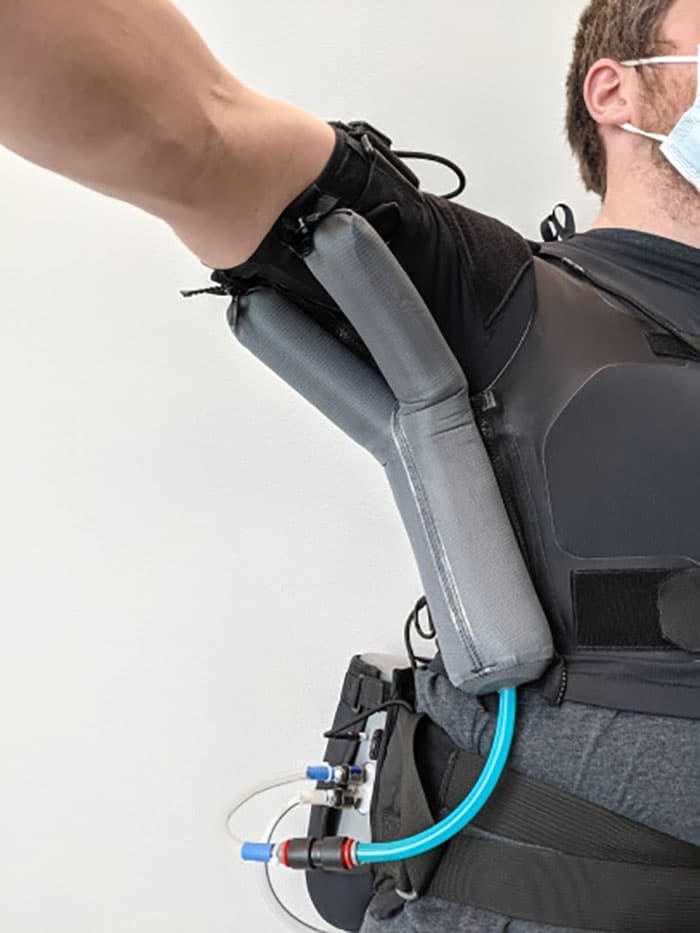Amyotrophic lateral sclerosis (ALS), also known as Lou Gehrig’s disease, is a progressive neurodegenerative disease that damages a patient’s cells in the brain and spinal cord necessary for movement. Muscles become weaker as the disease progresses, and arms and legs begin to look thinner as muscle tissue atrophies.
Now, a team of researchers from Harvard University and Massachusetts General Hospital has developed a soft robotic wearable capable of significantly assisting upper arm and shoulder movement in people with ALS.
This soft robotic wearable is basically a shirt with some inflatable, balloon-like soft-robotic actuators located under each of the wearer’s armpits. These fabric-bodied actuators are connected using hoses to a battery-powered air pump mounted on the back of the user’s waist.
The team developed a sensor system that detects residual movements of the arm, which the wearer is still able to manage on their own. Those sensors calibrate the pressurization of the balloon actuator to move the person’s arm smoothly and naturally.

The researchers already tested the sensor system on ten people living with ALS. A 30-second calibration process was initially required to detect each wearer’s unique level of mobility and strength. It took participants less than 15 minutes to learn how to use the device. The team found that the soft robotic wearable improved study participants’ range of motion, reduced muscle fatigue, and increased performance of tasks like holding or reaching for objects.
“These systems are also very safe, intrinsically, because they’re made of fabric and inflatable balloons,” says Tommaso Proietti, the paper’s first author. “As opposed to traditional rigid robots, when a soft robot fails, it means the balloons simply don’t inflate anymore. But the wearer is at no risk of injury from the robot.”
The current assistive prototype was only able to function on participants who still had some residual movements in their shoulder area. However, ALS typically progresses rapidly within two to five years, to the point that even slight muscle movements are impossible. To address this issue, the team is now exploring potential versions of assistive wearables whose movements could be controlled by signals in the brain.
They hope such a device might someday aid movement in patients who no longer have any residual muscle activity.
“This study gives us hope that soft robotic wearable technology might help us develop new devices capable of restoring functional limb abilities in people with ALS and other diseases that rob patients of their mobility,” says Conor Walsh, senior author on the paper reporting the team’s work.
Journal reference:
- Tommaso Proietti, Ciaran O’Neill, Lucas Gerez, Tazzy Cole, Sarah Mendelowitz, Kristin Nuckols, Cameron Hohimer, David Lin, Sabrina Paganoni, Conor Walsh. Restoring arm function with a soft robotic wearable for individuals with amyotrophic lateral sclerosis. Science Translational Medicine, 2023; DOI: 10.1126/scitranslmed.add1504
Soft robotic wearable restores arm function for people with ALS
Source: Tambay News

0 Comments